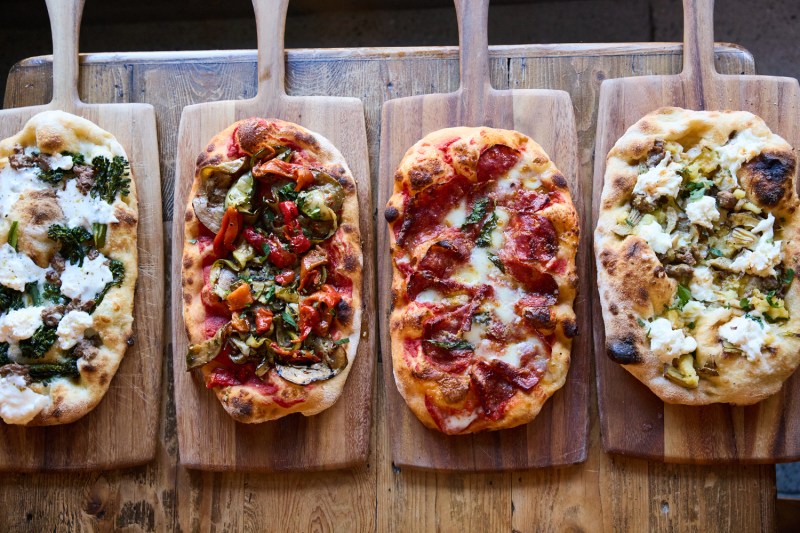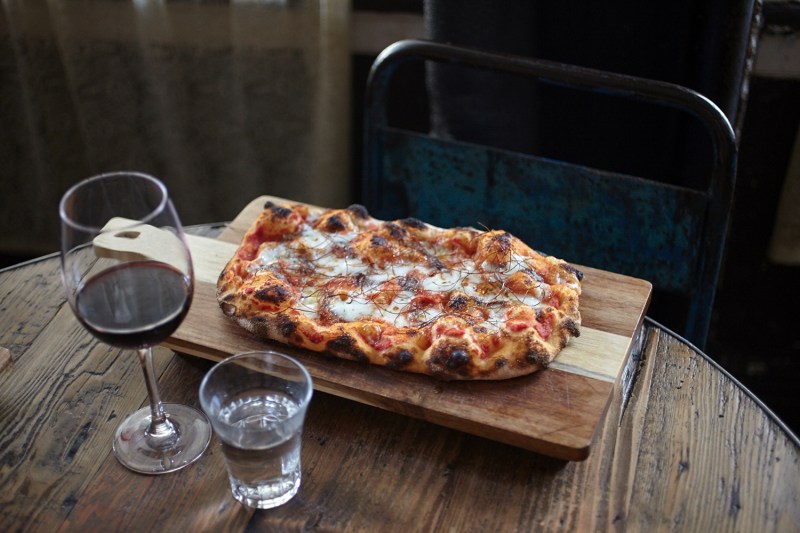Pizza is an artform with a countless variety of artists and styles. So far, we’ve eaten our weight in everything from Columbus-style pizza to its tasty toast sibling. Turns out, we’re still making new discoveries — or at least unearthing old and forgotten styles and making them famous again.
What’s on the pizza plate right at this moment? Pinsa, the Roman version based on some age-old techniques but that’s only just recently gaining popularity. Pinsa pizza is enjoying a moment, certainly, but what exactly is it?

We reached out to pinsa guru Gianluca Legrottaglie, the founder of America’s first pinseria, Montesacro. The restaurant began in Brooklyn but now has three more locations, all based in California. He was kind enough to offer some insights on the Roman-style pizza.
For him, it all started back in Italy. “My father took me to a pinsa place in Rome around the time that I was about to start a Roman pizzeria in San Francisco,” he recalls. “I learned about pinsa for the first time during this trip to Italy and discovered this product that I was completely unaware of.”
He began to ask around to see if anybody was planning to ship this pizza concept over stateside and heard that nobody was. America loves pizza, and Legrottaglie saw an opportunity. “A combination of the characteristics and the quality of the pinsa, as well as the excitement of bringing something to the U.S. for the first time, got me very excited, which is why I decided to bring it to the States.”
Read on to learn a bit more about how pinsa differs from the pizza pack.
The history of pinsa
While styles similar to this have been around since the ancient Roman era, the particular brand of pinsa trending these days is not that old at all. In fact, in terms of Italian history, it’s basically an infant.
“Historically speaking, pinsa doesn’t go that far back,” Legrottaglie admits. “Corrado Di Marco invented pinsa in 2001. He has been in the flour industry for more than three generations. He was in search of something that was easier to digest than pizza, something that was lighter, more flavorful and just different in general. He researched and studied and came up with this combination of flour.”
The name comes from the Latin term “pinsere,” which means to stretch. As Legrottaglie suggests, the reference here is to the stretching of the dough. It’s all done by hand, and instead of being tossed or thrown like conventional pizza dough, it’s kneaded and stretched on the countertop. Of the many Italian pizza styles, pinsa may be the easiest to consume very large quantities of (and that’s saying something).
How pinsa differs from pizza

So how does pinsa stand alone when we’re talking about things like New Haven style, deep dish, or Spokane-style pizza? It begins with what goes into the style. “The flours used in pizza are 100% wheat flour while pinsa is made from soy, rice, and wheat flour,” Legrottaglie says. “Pinsa dough also proofs anywhere from 48 to 72 hours, or more. Because of the proofing and the usage of rice flour, the dough is crispy on the outside but soft on the inside.”
That makes for a decidedly lighter pizza, described by some as cloud-like. There’s more water content involved, so the result is airier in texture and contains fewer calories. “It’s much easier to digest than pizza, as well as lighter and more flavorful than pizza,” he continues. “The shape is also important. Pinsa is oval, whereas pizza is round or square. It’s incredibly versatile, but if you want to call it pinsa, you must respect the shape, size, weight, and flour used.”
Tips for making pinsa
Ingredients
- 3 1/2 cups all-purpose flour
- 1/2 cup rice flour
- 1 2/3 cups cold water
- 1 tablespoon extra virgin olive oil (EVOO)
- 1/2 teaspoon dry yeast
- 1 teaspoon salt
Method
- Mix up flour, rice flour, and yeast in a large bowl.
- Whisk the mixture while slowly adding cold water. Then add salt and EVOO. Mix thoroughly.
- Cover the bowl and let rest for 30 minutes.
- Mix again and let rest for another 30 minutes.
- Mix once more with a wooden spoon and cover. Place in fridge for 24 hours.
- Invert container to release the dough. Divide dough into two parts. Using your hands, make a round bowl out of each section of dough.
- Line a baking sheet with parchment paper. Put the dough balls on top and sprinkle some rice flour on top.
- Cover dough with a towel and allow to rise for 60 minutes.
- Add a little EVOO to the dough and use your hands to stretch the dough from the center outward, forming the signature oval shape.


